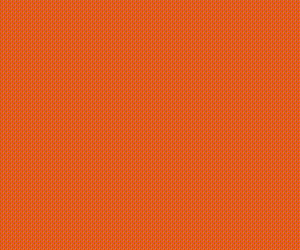-
 Home
Home
-
 News
News
-
 Colleges
Colleges
Pakistan's Largest Database of Colleges and Universities
Explore Largest Directory of Private and Govt. Colleges, Universities and find best institute for your future Education.
-
 Courses
Courses
-
 Admission
Admission
-
 Lectures
Lectures
-
 Online Test
Online Test
Short Question
- 9th Class Physics Short Questions
- 9th Class Chemistry Short Questions
- 9th Class Math Short Questions
- 9th Class Biology Short Questions
- 9th Class Computer Short Questions
- 9th Class English Short Questions
- 10th Class Physics Short Question
- 10th Class Chemistry Short Question
- 10th Class Math Short Question
- 10th Class Biology Short Question
- 10th Class Computer Short Question
- 10th Class English Short Question
-
 Past Papers
Past Papers
-
 Date Sheets
Date Sheets
-
 Results
Results
Exam Results 2024
Check online Results 2024 Matric Inter BA BSc B.Com MA MSc M.Com CSS PCS MCAT ECAT of all educational boards and universities in Pakistan
-
 Study Abroad
Study Abroad
Study Abroad Programs and Opportunities for Pakistani Students
Explore free study abroad search to find programs, consultants, events to study in USA, UK, Australia, China, Malaysia and many others.
-
 Jobs
Jobs
-
 Tutors
Tutors
-
 More
More
-
 Apps
Apps
7th General Science Urdu Medium Chapter 7 Test
General Science 7th Class Urdu Medium Chapter 7 Online Test
Try the General Science 7th Class Urdu Medium Chapter 7 Online Test.
-
Total Questions10
-
Time Allowed10
Question # 1
ایک کنسریٹیڈ سلوشن اپنے اندر حل کرسکتا ہے.
Question # 2
درج زیل میں سے کون سا پانی میں ان سالیوبل ہے.
Question # 3
سلوشن کا نام جس کے نام پر رکھا جاتا ہے.
Question # 4
ایک سولوشن جس میں حل شدہ سولیوٹ کی مقدار نسبتا کم ہوتی ہے کہلاتاہے
Question # 5
سالیوٹ کی مقدار جو 100 سالونٹ کو ایک خاص ٹمپریچر پر سچوریٹ کرنے کے لیے درکار ہو کہلاتی ہے.
Question # 6
کون سا سولونٹ سب سے بہتر ہے.
Question # 7
سلوشن کی سنٹرنتھ جس کی مقدار پرمنحصر ہے.
Question # 8
ایسا سلوشن جس میں یاک خاص ٹمپریچر مزید سولیوٹ حل نہیں کیا جاسکتا کہلاتا ہے.
Question # 9
سلوشن ایک ہے
Question # 10
بائنری سلوشن کے کمپونینٹس ہیں.
Here you can prepare 7th General Science Urdu Medium Test. Click the button for 7th General Science Urdu Medium Chapter 7 100% free full practice test.
Top Scorers of General Science 7th Class Urdu Medium Chapter 7 Online Test
-
S Sarahhj Burhan 01 - Feb - 2024 00 Min 28 Sec 20/20 -
W Wasif Ali 06 - May - 2021 00 Min 31 Sec 20/20 -
S Saima Ubaid ullah 22 - Dec - 2021 00 Min 32 Sec 20/20 -
S Saima Ubaid ullah 22 - Dec - 2021 00 Min 33 Sec 20/20 -
S Saima Ubaid ullah 22 - Dec - 2021 00 Min 42 Sec 20/20 -
W Wasif Ali 26 - May - 2021 01 Min 02 Sec 20/20 -
Z Zaib Jaa 18 - Mar - 2023 01 Min 03 Sec 20/20 -
W Wasif Ali 06 - May - 2021 01 Min 04 Sec 20/20 -
W Wasif Ali 26 - May - 2021 01 Min 27 Sec 20/20 -
Z zahid iqbal 06 - Feb - 2021 01 Min 35 Sec 20/20 -
K khadija rahman 28 - Jun - 2021 01 Min 53 Sec 20/20 -
W Wasif Ali 26 - May - 2021 03 Min 44 Sec 20/20 -
S Saima Ubaid ullah 22 - Dec - 2021 00 Min 53 Sec 18/20 -
T Tauseef Iqbal 14 - Dec - 2021 00 Min 57 Sec 18/20 -
T Tauseef Iqbal 14 - Dec - 2021 01 Min 02 Sec 18/20

.gif)
















.png)

